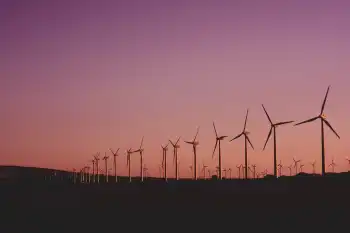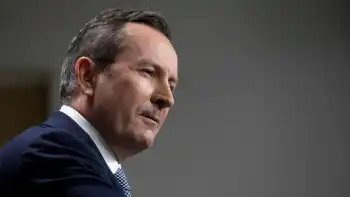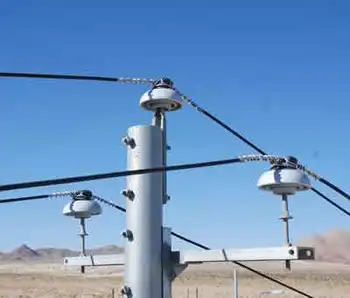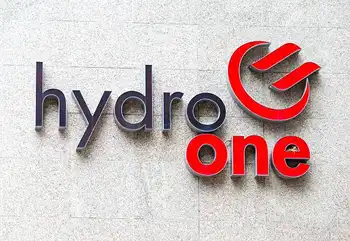Stimulus fanning growth for wind energy producers
Like solar companies, the wind players need help from the feds to build and keep momentum, and they're getting it so far.
"The prognosis for wind is pretty decent right now," said Pacific Crest analyst Mark Bachman. "Several large projects are looking to use the investment tax credit."
Some smaller projects already are using it, early beneficiaries of a provision in February's $787 billion American Recovery and Reinvestment Act. It lets them trade in their $21 per megawatt-hour production tax credit for the 30% investment tax credit, which became available as a grant in July. By late September, recipients of $1 billion in grants were named, many of them wind producers.
That's helped the U.S. wind sector add more new generating capacity through September than it expected to add all year, says Liz Salerno, director of industry data and analysis for the American Wind Energy Association. "The rule came out, applications went in, money started flowing," she said.
Last quarter the industry put in 1,649 megawatts of new generating capacity — the amount of power that can be provided at any given instant. It's enough to serve about 480,000 households. The industry added more than 5,800 MW in the first nine months of the year, bringing capacity overall to 31,109 MW.
By comparison, installed U.S. solar capacity rose 1,265 MW last year, to 9,183 MW, says the Solar Energy Industries Association.
"The wind market in the U.S. is much more mature than the solar market," said analyst John Hardy at Broadpoint AmTech.
About $6.5 billion in new investment has gone into wind since the guidelines debuted, the AWEA says. Besides finished projects, it counts 1,700 MW of construction starts.
Wind's rise can also be seen in Department of Energy data on electricity actually generated. U.S. wind plants accounted for 4.5 million megawatt hours of power produced in July, up 706,000 MWh, or 18.5%, from a year earlier. Only natural gas showed a greater gain.
Devens, Mass.-based American Superconductor (AMSC) is one wind and power grid company on the rise. Its year-over-year sales rose 83% and 85% in its first two fiscal quarters, with earnings per share of 12 and 19 cents vs. year-ago losses.
Other large players include Denmark's Vestas, Spain's Gamesa, General Electric (GE) and Germany's Siemens (SI), Hardy says.
Wind was laid low by the financial crisis of 2008. The crisis dried up the tax equity financing market that wind entrepreneurs relied on — along with their ability to get credit. It used to be that wind entities would sketch out how much tax credit they'd accumulate, then find some investor who could use the credits to offset a big tax bill, and voila, project financing.
Last year's financing fallout drove up the cost of producing wind energy, and at a time when solar's cost was falling on a supply glut.
"There was a big demand for (wind energy), all the pieces fell into place and then the financial crisis hit," Salerno said. "We usually finance our projects with a blend of equity and debt, and those markets retreated."
Then came the stimulus package.
It "made a very big change," Bachman said. "The wind guys for the next two years, if they want to opt for the 30% tax credit they can, but they'd have to give up their producer credit."
Wind producer economics "are such that it's much better for them to turn the subsidy structure into a 30% grant," Hardy said. "That's why we're seeing so many of them get that credit first (before solar). There aren't a lot of existing solar plants out there to get that.
"By mid-2010 we expect a pretty significant rebound in orders."
To move the sector forward, Salerno says, wind needs a national plan for putting power transmission lines in place, as well as a renewable energy standard that would mandate that a certain percentage of U.S. power comes from renewables. Both items are controversial, with who-should-pay strings attached.
"Transmission really does have to be dealt with at a federal level," she said. "And our No. 1 priority is getting long-term market policy in place through the RES (renewable energy standard)."
Bachman says a lack of transmission lines hampers the wind market. But the problem is getting more attention. The U.S. government announced $3.4 billion in smart-electric-grid grants on October 27, replete with visits by the president to solar and wind facilities that month.
Two days later, the regulator overseeing the nation's bulk power called "transmission siting" a necessity. In a report, the North American Electric Reliability Corp. said more than 11,000 miles of a total 32,000 proposed "must be developed on time to ensure reliability over the next 10 years."
The report models expected power needs with a continent-wide, 15%-renewable portfolio standard in place. It calls transmission siting the top issue, saying it "remains a significant obstacle."
High capacity transmission-line infrastructure is needed to deliver power from far-flung solar and wind plants. A grid that can smartly balance loads is also desirable, since wind only blows some of the time, and the sun rises and sets. As the AWEA and SEIA mention in a joint report, "the bulk of America's best wind resources are located in the plains stretching south from the Dakotas to Texas, while most of the country's population live along the coasts."
More than 300,000 megawatts of planned wind energy projects are "lined up in the interconnection queues to connect to the transmission grid," Salerno said. But first, a coordinated plan is needed to figure out the politics and engineering of where to put transmission lines through a host of jurisdictions.
"Maybe the highest of hurdles is paying for it," Salerno said. "So you're building this line and it will serve millions in the region — who pays for it?"
The three P's of planning, permitting and paying will need direction at the federal level, she says. Legislation circulating on Capitol Hill addresses some aspects.
Texas, the biggest wind-power state, hasn't waited. The state said "we want to bring wind from West Texas to Central and East Texas where all the demand is, and we want to plan a transmission system," Salerno said. "They've broken ground on building transmission lines."
Controversy exists there too, though. Senator Charles Schumer, D-N.Y., urged that $450 million in stimulus money be blocked from aiding a proposed Texas wind farm that relies on many turbines made in China, saying it would create jobs in China, not in the U.S.
Related News
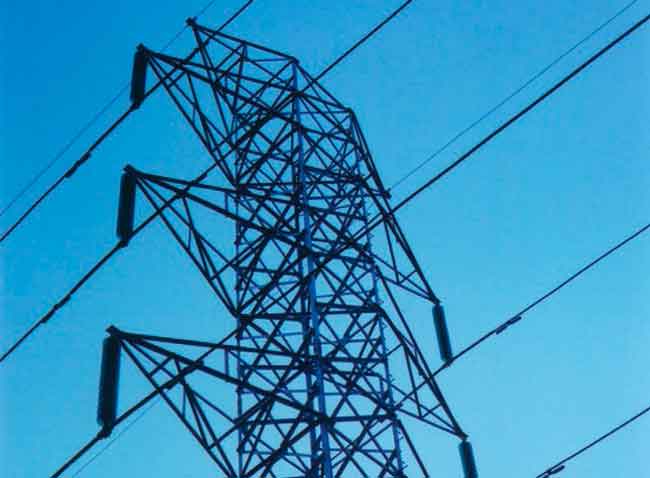
Schneider Electric Aids in Notre Dame Restoration
PARIS - Schneider Electric, a global leader in energy management and automation, has played a significant role in the restoration of the Notre Dame Cathedral in Paris following the devastating fire of April 2019. The company has contributed by providing its expertise in electrical systems, ensuring the cathedral’s systems are not only restored but also modernized with energy-efficient solutions. Schneider Electric’s technology has been crucial in rebuilding the cathedral's electrical infrastructure, focusing on safety, sustainability, and preserving the iconic monument for future generations.
The fire, which caused widespread damage to the cathedral’s roof and spire, raised concerns about both the…


